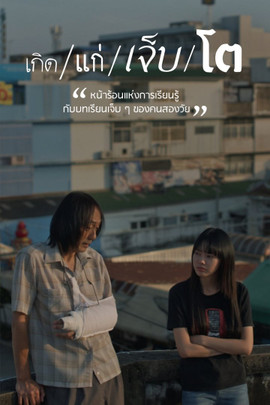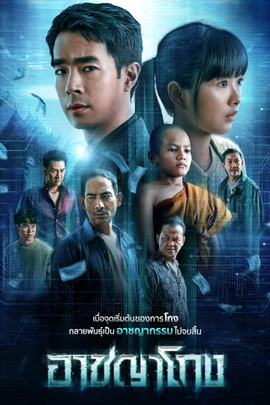
SUNGAI UPE : LITTLE PENANG
As a land of pluralism, Satun has long been a cultural and commercial meeting place for Thais and Malays who travelled throughout the Malay Peninsula. Satun’s ports have served as windows into a broader world that facilitated the exchange of goods and products from far-off places. Cultural inflows from foreign countries were blended with the local cultural forms, creating a rich cosmopolitanism in the regional maritime world.
Praya Puminatpakdee was assigned to govern Satun in the early 1900s. He had previously lived in Penang where he witnessed the development of Penang under British rule. He used Penang’s architectural concepts and adopted them to Satun. These architectural style can be observed in the town’s earliest department stores. The governor invited about 7,000 Chinese merchants in Penang to settle down in Su-ngai Upe. He developed Sungai Upe as a pepper plantation region, in line with the enormous commercial value of herbs and spices at the time. He established a port to transport the products to sell via the Sungai Upe steamboat route, which transformed Sungai Upe into “a new trade community” of the region.
Today, Sungai Upe, which is located in Thung Wa District of Satun Province, is reviving and regenerating its former glory. The mission is to help this land be reborn itself into the Little Penang that it once was, as a home to “a rich natural and cultural heritage” and one of the region’s “most distinctive pluralistic societies”.
Please stay tuned with "Spirit of Asia" on November 15th, 2020 at 04.30 - 05.00 PM. (Bangkok, UTC+7)
- Website : www.thaipbs.or.th/Live
- YouTube : www.youtube.com/ThaiPBS
Spirit of Asia

เพลินเพลงชีวิตกับวีจี
11 ต.ค. 63
ตามหาความอร่อยกับหนุมาน อาสเปอร์
18 ต.ค. 63
คอมมิวนิสต์มลายา อุดมการณ์ในพงไพร
25 ต.ค. 63
แผ่นดินที่เป็นไท
1 พ.ย. 63
A LAND THAT IS TRULY FREE
1 พ.ย. 63
SATUN’S EARTH HERITAGE OF FOSSILS
8 พ.ย. 63
โลกดึกดำบรรพ์ในสตูล
8 พ.ย. 63
สุไหงอุเป ปีนังน้อย
15 พ.ย. 63
SUNGAI UPE : LITTLE PENANG
15 พ.ย. 63
ยุวสตูล แตกหน่อผลิใบ
22 พ.ย. 63
SATUN YOUTH : THE GROWING BRANCHES OF REVIVED HERITAGE
22 พ.ย. 63
A CITY OF FAITH CALLED NAKHON SI THAMMARAT
29 พ.ย. 63
ใต้ร่มเงาเมืองแห่งศรัทธา นามนครศรีธรรมราช
29 พ.ย. 63
เส้นทางศิลป์เมืองนคร
6 ธ.ค. 63
THE ARTISTIC PATHS OF THE OLD CITY OF NAKHON
6 ธ.ค. 63
มรดกสงครามในนาม จีไอ ตอนที่ 1
13 ธ.ค. 63
THE G.I. WAR LEGACY EP.1
13 ธ.ค. 63
มรดกสงครามในนาม จีไอ ตอนที่ 2
20 ธ.ค. 63
THE G.I. WAR LEGACY EP.2
20 ธ.ค. 63
ชาวไทยซิกข์ในวิถีหนึ่งเดียว
27 ธ.ค. 63
THE ONE PATH OF THAILAND’S SIKH COMMUNITY
27 ธ.ค. 63
ดวงประทีปของชาวซิกข์
3 ม.ค. 64
THE LIGHT OF THE SIKH FAITH
3 ม.ค. 64
THE WAY OF THE CAT IN A CHANGING WORLD
10 ม.ค. 64
วิถีแมวกับโลกที่เปลี่ยนไป
10 ม.ค. 64
THE RESCUE MISSION ON CAT ISLAND
17 ม.ค. 64
ปฏิบัติการกู้วิกฤตเกาะแมว
17 ม.ค. 64
PHILOSOPHIES AND BELIEFS GOVERNING THE WORLD OF CATS
24 ม.ค. 64
ปรัชญากับความเชื่อจากแมว
24 ม.ค. 64
ซีรีส์ GEN XYZ : เกษียณแบบสตรอง
31 ม.ค. 64
Spirit of Asia

เพลินเพลงชีวิตกับวีจี
11 ต.ค. 63
ตามหาความอร่อยกับหนุมาน อาสเปอร์
18 ต.ค. 63
คอมมิวนิสต์มลายา อุดมการณ์ในพงไพร
25 ต.ค. 63
แผ่นดินที่เป็นไท
1 พ.ย. 63
A LAND THAT IS TRULY FREE
1 พ.ย. 63
SATUN’S EARTH HERITAGE OF FOSSILS
8 พ.ย. 63
โลกดึกดำบรรพ์ในสตูล
8 พ.ย. 63
สุไหงอุเป ปีนังน้อย
15 พ.ย. 63
SUNGAI UPE : LITTLE PENANG
15 พ.ย. 63
ยุวสตูล แตกหน่อผลิใบ
22 พ.ย. 63
SATUN YOUTH : THE GROWING BRANCHES OF REVIVED HERITAGE
22 พ.ย. 63
A CITY OF FAITH CALLED NAKHON SI THAMMARAT
29 พ.ย. 63
ใต้ร่มเงาเมืองแห่งศรัทธา นามนครศรีธรรมราช
29 พ.ย. 63
เส้นทางศิลป์เมืองนคร
6 ธ.ค. 63
THE ARTISTIC PATHS OF THE OLD CITY OF NAKHON
6 ธ.ค. 63
มรดกสงครามในนาม จีไอ ตอนที่ 1
13 ธ.ค. 63
THE G.I. WAR LEGACY EP.1
13 ธ.ค. 63
มรดกสงครามในนาม จีไอ ตอนที่ 2
20 ธ.ค. 63
THE G.I. WAR LEGACY EP.2
20 ธ.ค. 63
ชาวไทยซิกข์ในวิถีหนึ่งเดียว
27 ธ.ค. 63
THE ONE PATH OF THAILAND’S SIKH COMMUNITY
27 ธ.ค. 63
ดวงประทีปของชาวซิกข์
3 ม.ค. 64
THE LIGHT OF THE SIKH FAITH
3 ม.ค. 64
THE WAY OF THE CAT IN A CHANGING WORLD
10 ม.ค. 64
วิถีแมวกับโลกที่เปลี่ยนไป
10 ม.ค. 64
THE RESCUE MISSION ON CAT ISLAND
17 ม.ค. 64
ปฏิบัติการกู้วิกฤตเกาะแมว
17 ม.ค. 64
PHILOSOPHIES AND BELIEFS GOVERNING THE WORLD OF CATS
24 ม.ค. 64
ปรัชญากับความเชื่อจากแมว
24 ม.ค. 64
ซีรีส์ GEN XYZ : เกษียณแบบสตรอง
31 ม.ค. 64





















